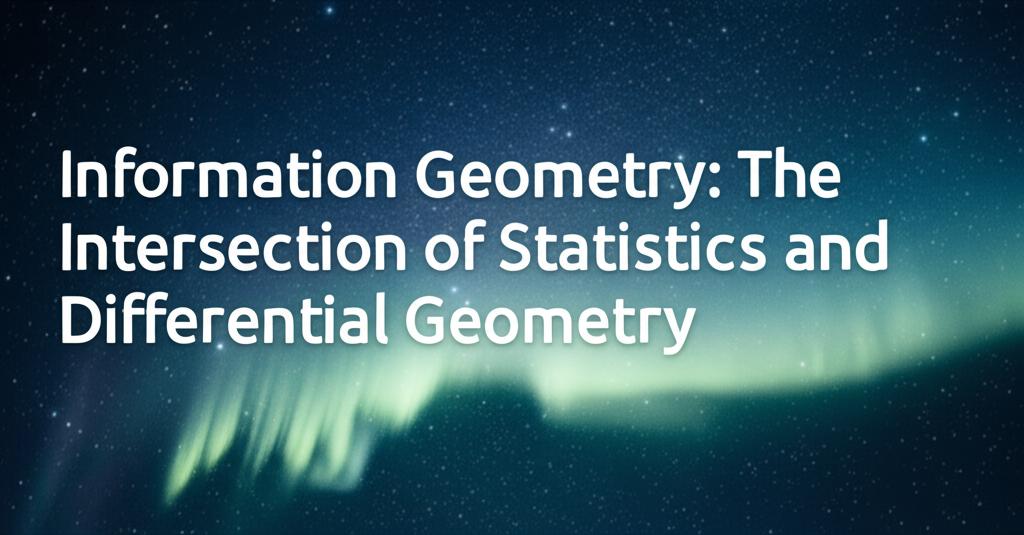Information geometry lies at the fascinating crossroads of statistical theory and differential geometry, providing a powerful framework to understand the intrinsic structure of statistical models. This interdisciplinary field treats families of probability distributions as points on a manifold, a space that locally resembles Euclidean space, and applies geometric concepts like distance and curvature to analyze statistical problems.
The foundational idea, dating back to the work of C.R. Rao, involves endowing the manifold of probability distributions with a Riemannian metric known as the Fisher information metric. This metric quantifies the "distance" between nearby probability distributions, reflecting how distinguishable they are based on observed data. This geometric perspective allows for a deeper understanding of statistical concepts like estimation, hypothesis testing, and model selection.
A key development in information geometry is the concept of dual affine connections, prominently explored by Shun'ichi Amari. These connections, often referred to as e-connections and m-connections, provide a richer geometric structure than a simple Riemannian metric. This "dualistic" structure is particularly insightful for understanding exponential families of distributions, which are prevalent in statistical modeling. For instance, the Pythagorean theorem can be generalized within this framework, aiding in problems related to information projections and finding the "closest" distribution in a model to a given data distribution.
Recent advancements continue to expand the scope and applicability of information geometry. Researchers are exploring connections to various other mathematical and scientific domains, including:
- Quantum Information Theory: Extending geometric concepts to the realm of quantum states and quantum operations.
- Machine Learning and Artificial Intelligence: Applying information geometric tools to understand and improve learning algorithms, such as natural gradient descent, and to analyze the structure of neural networks.
- Topological Field Theory: Investigating the interplay between the geometric structures of statistical models and concepts from algebraic topology and field theory.
- Optimal Transport and Wasserstein Geometry: Exploring the relationships and distinctions between the Fisher-Rao geometry and the geometry arising from optimal transport problems, which deals with the cost of "moving" one probability distribution to another.
- Non-Parametric Statistics and Infinite-Dimensional Manifolds: Extending information geometric ideas to handle more complex, non-parametric statistical models and the challenges posed by infinite-dimensional spaces of probability distributions.
- Beyond Conventional Approaches: Researchers are increasingly investigating manifolds and geometric structures that go beyond the traditionally studied dually-flat and torsion-free connections, opening up new avenues for theoretical development and application.
The applications of information geometry are diverse and continue to grow. It has found utility in areas such as:
- Signal Processing: For tasks like filtering and time series analysis.
- Neuroscience: To analyze neural coding and understand the information processing in the brain, for instance, by studying the geometry of spiking neural network activity.
- Statistical Physics and Thermodynamics: Providing geometric insights into concepts like entropy and equilibrium.
- Mathematical Finance: For modeling and risk analysis.
- Shape Restricted Inference and Image Analysis: Where geometric concepts are naturally applied to analyze shapes and surfaces from data.
The ongoing development of information geometry highlights the power of abstract mathematical concepts in solving practical problems across various scientific disciplines. By bridging the gap between the seemingly disparate fields of statistics and differential geometry, it offers a unifying and insightful perspective on the nature of information and uncertainty. As data continues to grow in complexity and volume, the geometric tools provided by this field are poised to become even more crucial for extracting meaningful insights.

